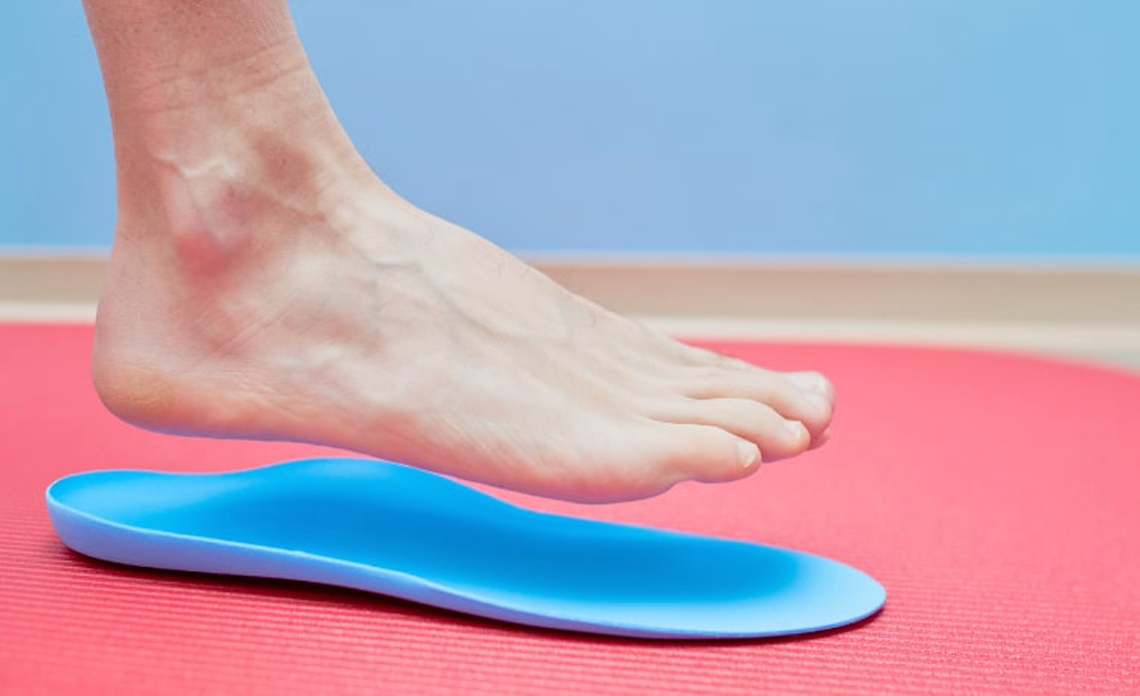The majority of Podiatrists in the late 1980’s we were informed that foot orthoses worked by:
“bringing the ground up to the foot thereby negating the need for compensation”.
This notion stemmed from the work of the American podiatrist, Merton Root and his colleagues in the 1960’s and 70’s who had suggested that the primary objective of treatment with foot orthoses was to control position and motion of the foot.
The prevailing paradigm at this time was that foot orthoses exerted their therapeutic effect by altering the kinematics of the foot.
In 1998 the Australian Podiatry Council defined a foot orthosis as:
“an appliance to support, align, and correct deformity or motion of parts of the body”.
However, when we examine the modern scientific literature regarding the effect of foot orthoses on foot kinematics we see that for every study that concludes that the foot orthoses altered the foot’s kinematics, we find another study that concludes that orthoses did not alter foot kinematics.
Despite this, outcome studies and satisfaction surveys suggest that foot orthoses do “work”. It seems reasonable then to assume that foot orthoses don’t always exert their therapeutic effects by altering foot kinematics and that a re-examination of how foot orthoses “work” is required.
Foot orthoses are generally inert pieces of shaped material. As such they can only “work” either psychologically (via placebo effect) or mechanically (by altering the magnitude and temporal patterns of reaction forces acting on the plantar foot at its interface with the foot orthosis).
Mechanically, they can only alter forces (kinetics) at the foot–orthosis interface by virtue of 3 design variables:
- Their load/deformation characteristics
- Their superior surface geometry
- Their frictional characteristics
Isaac Newton told us what force “is” in his 2nd Law of Motion, it is the rate of change of momentum (Force = mass x acceleration);
Newton’s 3rd Law of Motion told us that for every action there is an
equal and opposite reaction.
During human locomotion the foot pushes against the ground and the
ground provides a reaction force against the foot. This ground reaction force (GRF), is the vector product of 3 components: 1. vertical (normal) 2.
anterior-posterior shear 3. medial-lateral shear Like all forces, the net GRF vector has a point of application (centre of pressure (COP)), a line of action and a magnitude.
The position and magnitude of the net GRF vector relative to a joint axis determines the external moment acting across that joint:
(moment = force x perpendicular distance from axis).
For example, if the net GRF vector acts laterally to the subtalar joint axis it will generate an external pronation moment about the subtalar joint axis; if the net GRF vector passes medially to the subtalar joint axis it will generate an external supination moment about the subtalar joint axis.
In order to bring about equilibrium the body tissues must generate an equal and opposite internal moment. Excessive external forces acting on the foot increase the workload of internal structures in resisting these forces to bring about static equilibrium.
Biomechanically, each of the body’s tissues has a zone of optimal stress (ZOOS), in order for the tissue to remain in a healthy state the loading
applied to the tissue must be within the range of the ZOOS. Pathology may result when the demands on the tissues are too great, i.e. the external moment is too large.
To bring about equilibrium, with less tissue stress, we need our orthoses to modify the external moments and thereby reduce the loading on the injured tissue back within its ZOOS.
To understand how foot orthoses alter the external moment we first need to understand how reaction forces are generated. That is, when we apply a force from our body to the ground via our feet, how does the ground do
the pushing back?
It was Newton’s contemporary and academic sparring partner Robert Hooke who told us “how” the ground does the pushing back. Hooke’s Law explains that every kind of solid changes shape when a mechanical force is applied to it and it is this change in shape that enables the solid to do the pushing back.
Foot orthoses transmit forces from the body through their structure to the shoe and so to the ground. To produce static equilibrium, an orthosis must provide an equal and opposite reaction (Newton’s 3rd Law of Motion).
When loads are applied to an orthosis, the orthosis tries to absorb its effects by developing internal forces that vary from one point to another.
The intensity of these internal forces is the mechanical stress. When subjected to external loads, orthoses change their shape; though sometimes
imperceptibly, this change in shape is termed displacement or deformation and is measured by the mechanical strain.
Thus, the necessary orthosis reaction force is generated by the stress caused by the action of the loads within the orthosis material, and by the ensuing strain in the elements of the orthosis structure.
When we review the literature concerning whether or not foot orthoses alter rearfoot kinematics, we find the evidence base is split, for every study that claims a change in rearfoot kinematics in association with foot orthoses, another study reports that there is no change in rearfoot kinematics in association with foot orthoses use.
The resultant net ground reaction force (GRF) vector is the product of the vertical (normal) force component and the shear force components. Now consider this: why does it hurt if we walk into a lamp-post, but not if we walk into a padded lamp-post?
When we walk into a lamp-post the rate of change of our momentum (rate of change of momentum = force, Newton’s 2nd Law of Motion) is
high and the time to static equilibrium is short, when we walk into a padded lamp-post the converse is true, the rate of change of momentum is lower and the time to static equilibrium longer.
Applying this to foot orthoses we observe that with a relatively compliant orthosis in situ, the body’s momentum is transferred relatively slowly through the orthosis, the force of the impact is consequently relatively small and the time to static equilibrium is relatively longer; with a stiffer
orthosis in situ, the reverse is true.
Even when a foot orthosis is constructed from a uniform material
and despite that material having a constant Young’s modulus, the load/deformation characteristics are not constant at all points of the foot orthosis due to variation in the geometry of the device, nor are they constant across the plantar foot when it interacts with the orthosis.
In areas of the foot-orthosis interface where the orthosis is stiffer, i.e. it has higher load/deformation characteristics.
The rate of change of momentum is higher and the reaction forces will consequently be higher in
this area.
In areas where the orthosis is more compliant the rate of change of momentum is lower and the reaction forces lower too. In other words, the rate of change of momentum, at each point of the foot-orthosis interface will vary due to the material the orthosis is constructed from, it’s thickness
and the shape of the orthosis.
Some areas of the foot-orthosis interface will have higher reaction
forces and some areas will have lower reaction forces. Thus, the point-to-point curvature of the foot orthosis geometry modifies the relative distribution of the magnitudes of the discreet reaction forces acting on the plantar foot.
This in-turn modifies the characteristics of the net GRF vector and
thus the external moment acting across a given joint axis.
The geometry at the foot-orthosis interface results in an increase in the non-horizontal surface support elements beneath the foot. Thus, the curvi-linear surface shape of the superior surface of the foot orthosis influences the net GRF vector by virtue of increasing the non-vertical components of the GRF.
As the angle of curvature of a point at the foot-orthosis interface increases away from horizontal, so the anterior-posterior shear and medial-lateral shear components of the GRF vector increase and the vertical component decreases.
The shear components are also affected by the coefficient of friction between the materials contacting each other at the foot-orthosis interface. Some areas of the orthosis surface at the foot-orthosis interface may exceed the angle of friction while an adjacent area may not.
This may lead to localised decreases in coupling between the foot and the orthosis. Together the superior surface geometry and the frictional characteristics of the foot-orthosis interface modify the line of action of the net GRF vector and thus the external moments.
In summary then, if we are presented with a dysfunctional tissue that is being subjected to loading outside of its ZOOS then the aim of foot orthoses therapy should be to manipulate the reaction forces acting at the foot–orthosis interface such that the loading applied to the target tissue falls back within its ZOOS, allowing it to heal, and without inadvertently exposing other tissues to deleterious loading levels.
If we place the loading of a tissue that was previously outside of its ZOOS somewhere within its ZOOS via our foot orthoses, allowing the tissue to heal, then that foot orthosis might be assumed to be successful for treating that problem, in that patient.
The body really doesn’t care whether the kinetic changes at the foot’s interface comes from custom or prefabricated off-the-shelf foot orthoses, only that the reaction forces generated at the foot–orthosis interface maintain the tissues loading within their ZOOS and in a healthy state.
When the net ground reaction force (GRF) vector passes medial to the subtalar joint axis (GRF1) it produces a subtalar joint supination moment; when the net GRF vector passes laterally to the subtalar joint axis (GRF2) it produces a subtalar joint pronation moment, resulting in differing external moments about the subtalar joint axis.
Theoretically any biomechanically related pathology that can be successfully treated with a custom foot orthosis could also be treated efficaciously with a prefabricated off-the-shelf foot orthosis.
Provided that both types of devices deliver the desired geometry, load/deformation, and/ or frictional characteristics at the foot–orthosis interface, they both will have the ability to influence the kinetics in a positive fashion.
The skilled clinician is capable of identifying the dysfunctional tissue and the severity of injury to it; they understand the biomechanical function of the tissue during various activities of daily living; and comprehend the manner in which each of the 3 foot orthoses design variables interact with one another and ultimately their kinetic influence on the foot.
This knowledge allows the clinician to provide the patient with a foot orthosis that modifies the reaction forces in such a manner that the
load on the target tissue falls back within its ZOOS.
This makes for happy patients. For the last decade or more I have been studying the mechanics of foot orthoses via physical testing and computational modelling in order to gain a better understanding of how foot orthoses exert their therapeutic effects.
During this time, I’ve spoken to many full-time clinical practioners treating patients, prescribing and manufacturing foot orthoses for them, and thereby putting ideas to the clinical test! The insights in this blog along with the contributions of many other talented individuals has provided, give an
understanding that foot orthoses work by altering forces at the foot-orthosis interface.
That is, they alter kinetics; kinetics “drive” the kinematics, but ultimately, we do not need to see a change in motion or position in order to achieve a positive clinical outcome.


